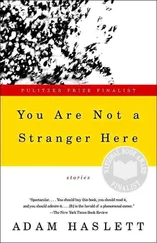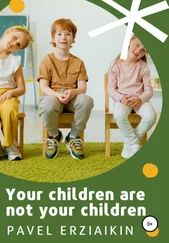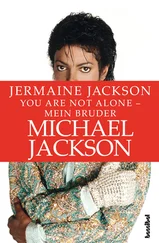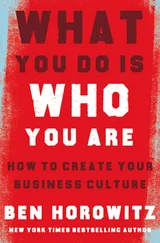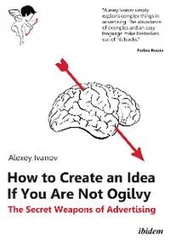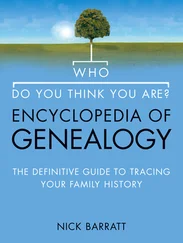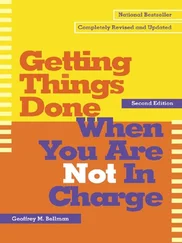In the kitchen, before the singing started, came the first elementary lesson: ‘We wash up only with clean water … CLEAN water!’ Then: ‘Use the hottest water your hands can bear, and lots of suds.’ Each plate was squeaked within a layer of its ceramic life. Each glass rinsed and dried, and held up to the light to make sure there was not a single watermark. If one was found, do it again.
After coming in from the street, we had to be virtually decontaminated. The first words out of Mother’s mouth were ‘Have you washed your hands? Go wash your hands.’ If she didn’t hear the tap running within seconds, there was trouble. On mornings before school, the hygiene inspection was always the same: ‘Did you wash your face? Wash your feet? In between your toes? Your elbows?’ Then came the acid test: a cotton swab dipped in alcohol rubbed across the back of the neck. If it turned grey, we weren’t clean enough. ‘Go back and wash yourself properly.’ If we wanted chocolate cake or a cookie, our hands were up for inspection, too. ‘But I washed them earlier!’ I often protested. ‘You been out touching door handles, boy – go wash them again!’
Clothes were never worn two days’ running, and had to be clean and pressed. No one from our family walked into the street with a single crease or stain. By the age of six, we had all learned to pitch in with the laundry. This was all part and parcel of a perfect order that helped keep so many kids – and potential chaos – in check.
When I joined the UK’s Big Brother house in 2007, everyone made fun of how I was always on guard against germs, asking house mates if they had washed their hands before preparing food. My wife, Halima, wasn’t surprised. She calls me a ‘germaphobe’ and I can hardly deny it. To this day, I won’t touch a door handle in a public restroom because I know how many men don’t wash their hands. I won’t touch the banister on public stairways or escalators. I’ll use a handkerchief or tissue to hold the gas pump trigger when filling the car. I’ll wash down with alcohol a hotel’s TV remote control before using it. I’m alive to cross-contamination from every surface.
Michael was no different. He even worried about other people’s pens when signing autographs, in the days when fans could get close enough. But his neurosis mainly centred on breathing in airborne germs. People mocked him for wearing surgical masks. There was speculation that he was hiding plastic surgery and I always laughed when I saw an article referencing the mask, saying it was ‘sparking fears about Michael’s health’. Because that was the point: it was all about fear – Michael’s fear that he could get ill. At these times, he will have felt he was coming down with something, or his immune system was low. He was, like me, on guard against germs all his life. At least, that was the origins of his surgical mask wearing and then, after a while, I think it became something of a fashion accessory that allowed him to ‘hide’; a mini shield for a man who wanted to grab whatever fraction of privacy that he could.
I DON’T REMEMBER A TIME WHEN Mother was not pregnant. I cannot recall her walking up the street with anything but a waddle, carrying in both hands two bags of shopping or second-hand clothes. Between 1950 and 1966, she produced nine children. That is some feat when measured against her and Joseph’s initial plan: three children maximum.
My sister Rebbie (pronounced Ree-bie) came first, then Jackie (1951), Tito (1953), me (1954), La Toya (1956), Marlon (1957), Michael (1958), Randy (1961) and Janet (1966). We would have been 10 but our other brother, Brandon, died during his twin birth with Marlon. That was why, at Michael’s memorial service in 2009, Marlon said, in his message to Michael: ‘I would like for you to give our brother, my twin brother, Brandon, a hug for me.’ A twin never loses that bond with his other half.
As kids, we received plenty of hugs from Mother. Contrary to the general depiction that we had some form of cold, unhappy childhood, our upbringing was full of love as Mother smothered us with kisses and affection. We still feel the strength of that love today. I was a real mama’s boy – as was Michael – and our worship became a fight between me, him and La Toya as to who occupied the coveted spot by Mother’s side, tight to her legs, gripping her skirt. La Toya did her best to unglue my attachment.
Whenever Mother was out and we brothers fought, we swore her into a pact. ‘Promise you won’t tell, La Toya. Promise!’
‘Promise,’ she said convincingly. ‘I won’t tell!’ As soon as Mother was through the door, the promise was undone with a dramatic confession. ‘Mother, Jermaine’s been fighting.’ We wanted to jack her up because she told on everyone. She always was the quiet observer, collecting her tales to spill later. It didn’t even matter if she made stuff up; she just wanted to win favour with Mother while I was left with extra chores as punishment. But the joke in later years was that I must have won favour more times than most because I was ‘always Mother’s pet,’ says Rebbie.
‘The favoured one!’ Michael said, which was a bit rich because he could do no wrong either.
I didn’t feel like a favourite but if Mother ever over-compensated, it had everything to do with an event that happened when she was pregnant with Michael. Aged about three, I decided it was a good idea to eat a bag of salt and so I was hospitalised with near kidney failure. I remember nothing of this trauma. I was a strong kid, but that illness put me in hospital for three weeks. Mother and Joseph couldn’t afford to visit me every day. When they did, the ward sister told them I had been screaming out my lungs for them. Every time they left, I stood on the bed, wailing. I’m kind of glad I don’t remember the look on Mother’s face as she was forced to walk away. She said it was ‘the most awful feeling.’
Eventually I was allowed home, but that event might explain why I became such a cry-baby and overly clingy, desperate not to be left behind again. On my first day at school, I struggled free of the teacher’s grip and sprinted down the corridor and out of the doors to find Mother. ‘You have to be here, Jermaine … You have to be here,’ she said, with the calmness that made everything okay again. Her compassion is rooted in a devout, unbreakable faith in God and she manages to strike a balance between the aura of a disciple and the authority of a Justice of the Peace. She has her breaking points, of course, but her calm made better any difficult situation.
She suffered for us, in being pregnant for 81 months of her life. She was beautiful, too, from the way she wore her wavy black hair to her pristine gowns, to the perfectly applied scarlet lipstick that left smudges on our cheeks. Mother was sunshine inside 2300 Jackson Street.
The moment she left for her part-time work at Sears department store, we couldn’t wait for her return. I have this warm image of her arriving through the front door, having trudged through the deep snow of an Indiana winter. She stood there, stamping her feet on the mat and shaking her head to dust off the snow. Then Michael – growing into the fastest of the brood – ran up and wrapped his arms around one leg, followed by me, La Toya, Tito and Marlon. Before taking off her coat, she brought out her hands from inside her pockets – and there was our regular treat: two bags of hot Spanish peanuts.
Meanwhile, Jackie and Rebbie prepared the kitchen for Mother to start cooking, waiting for Joseph to come home. We grew up calling him Joseph. Not Father. Or Daddy. Or Papa. Just ‘Joseph’. That was his request. In the interests of respect.
THERE IS A NURSERY RHYME ABOUT an old woman who lived in a shoe and ‘had so many children, she didn’t know what to do’. In terms of family size and cramped living quarters, it provides the best image of life inside the shoebox of 2300 Jackson Street. Nine children, two parents, two bedrooms, one bathroom, a kitchen and a living room were packed tight into a space about 30 feet wide and no more than 40 feet deep. From the outside, it looks like the kind of a house a child would sketch: a front door with a window either side and a chimney poking out the top. Our home was 1940s build, wood-framed, with a tiled pyramid lid that seemed so thin for a roof that we swore it would blow off during the first tornado. It faces on to Jackson Street on the corner of its T-junction with 23rd Avenue.
Читать дальше

